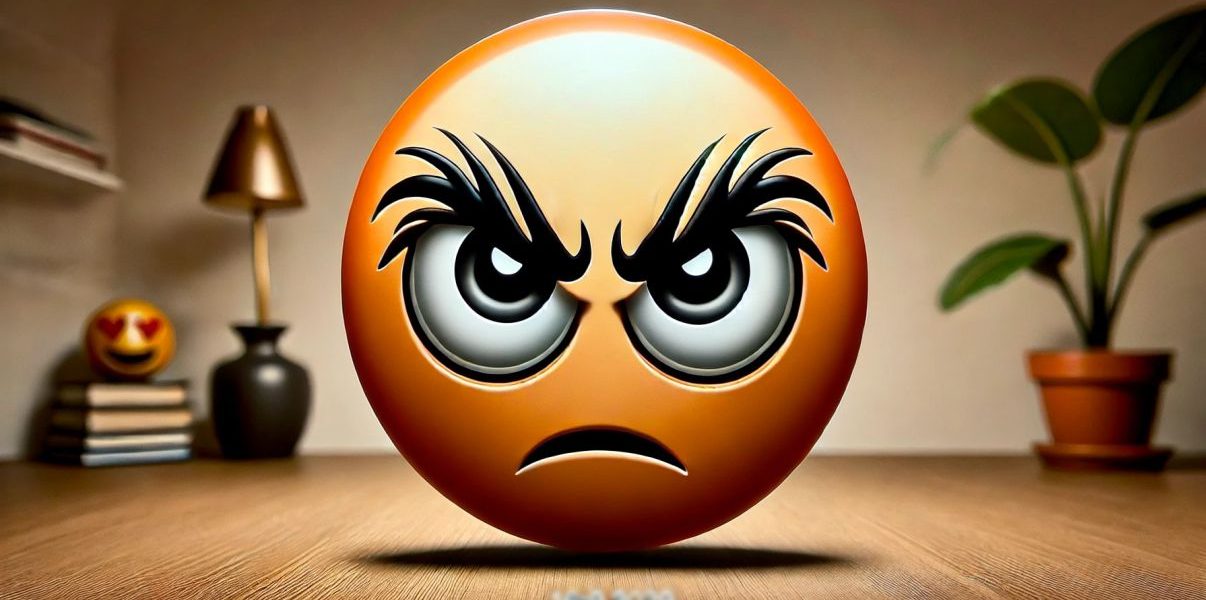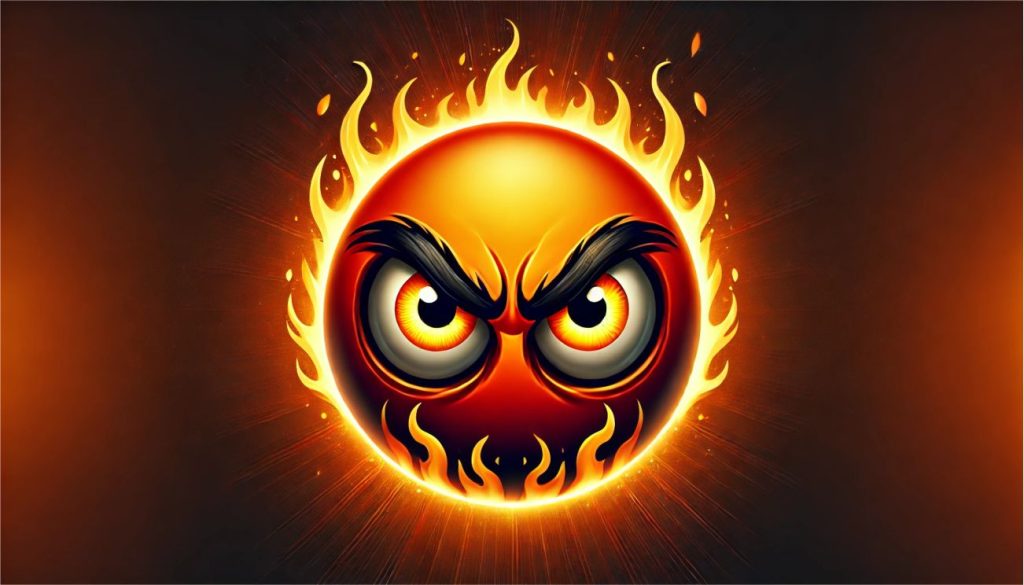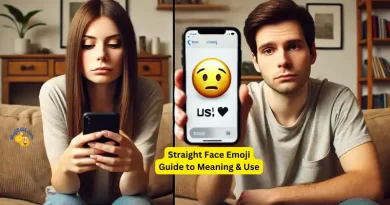Emoji de olho do mal
You’ll find the idea of the Evil Eye in religions like Christianity, Judaism, Islam, Buddhism, and Hinduism. It’s like a common thread that connects different beliefs. People across the world have used it as a way to stay safe, bring in good luck, and get rich. Whether you believe it or not, it’s interesting how the little symbol has become a kind of lucky charm for many.
The Evil Eye Emoji: A Global Good Luck Charm
You’ll find it across social media posts, Instagram stories, and various online platforms, often used to represent or ward off negative energy. The evil eye emoji isn’t just a modern phenomenon but a vibrant part of a much older tradition, deeply rooted in the symbolism of the evil eye.
What Does the Evil Eye Emoji Mean?
O evil eye emoji—typically depicted as a stylized blue eye with a black dot—draws on the rich history of the evil eye belief, which spans numerous cultures, but is especially prevalent in Turkish culture. The evil eye is an ancient symbol meant to protect against bad juju e negative energy.
O eye-shaped amulet, often featuring a light blue color and a black dot, is believed to shield the wearer from envy e jealousy, essentially acting as a protective charm. The emoji is frequently used to convey a sense of protection or to express good vibes, despite its origins in warding off negativity. It serves as a modern talisman, blending ancient beliefs with contemporary postagens em mídias sociais e Histórias do Instagram.
One Generation to Another: How The Evil Eye is Perceived Then and Now
Historically, the evil eye was depicted in many forms, including the Nazar amulet, which is a circular bead with an eye motif. The amulets were believed to protect against curses and negative energy.
Many people and cultures still believe in its symbolism to date, wearing amulets, bracelets, and sometimes anklets portraying the evil eye symbol as they go about their daily lives. In Turkey, it remains a tradition to gift an evil eye token to newborn babies, to protect them from any curse, malicious intent, or bad energy.
According to the BBC, “What’s most fascinating about the evil eye isn’t its mere longevity, but the fact that its usage has deviated little throughout millennia. We’re still affixing the evil eye to the sides of our planes in the same way that the Egyptians and Etruscans painted the eye on the prows of their ships to ensure safe passage.”
O evil eye emoji’s enduring relevance has also led to its inclusion digitally. is now mostly used in online communication to signify a playful warning or to inject some cultural depth into a conversation. People continue to embrace and share the symbolism of protecting against bad vibes e harm.
How It’s Used Today
O evil eye symbol, featuring a light blue eye with a black dot, represents more than just protection. It has become a way for individuals to express their desire to keep away bad vibes and promote good vibes in both online and offline interactions.
How Should You Act or Respond If Someone Sends You the Evil Eye Emoji?
Receiving the evil eye emoji might be a bit of a puzzle. Its use varies widely depending on the context and the sender’s intent, so your response might need to be tailored to fit the situation.
If the evil eye emoji is sent in a friendly, casual setting, it might simply be a playful nod to the concept of protection or a cultural reference. In such cases, acknowledging it with a light-hearted response or engaging in a conversation about its meaning might be appropriate. For instance, you could respond with a comment about the cultural significance of the emoji or share your thoughts on its protective symbolism.
However, if the emoji appears in a more serious or negative context, it might be worth considering the underlying message. The sender could be referencing bad juju or expressing concern about negative energy. If that’s the case, a more thoughtful approach might be needed.
Address any issues directly if it seems like the sender is using the emoji to highlight a problem or discomfort. Open communication should clarify the intent behind the emoji and address any underlying concerns.
Right and Wrong Ways Use the Evil Eye Emoji
The decision to send the evil eye emoji largely depends on the context and the message you intend to convey.
When It’s Right:
-
Cultural Reference: Use the evil eye emoji to add cultural depth to conversations, particularly if you’re discussing topics related to Turkish culture or ancient superstitions. It may be a way to celebrate or acknowledge those traditions.
-
Protection Symbol: If you’re expressing a desire for protection or good vibes, the evil eye emoji might be a fitting choice. For example, you might use it to wish someone well or to emphasize that you’re looking out for their well-being.
-
Humor and Playfulness: In casual contexts, the evil eye emoji may be used humorously to suggest a playful warning or to lighten the mood. The context must align with the intended light-hearted tone.
When It’s Wrong:
-
Negative Context: Avoid using the evil eye emoji if it could be interpreted as conveying bad vibes or negativity. Sending it in a context where it might be seen as a criticism or as highlighting someone’s shortcomings might come across as confrontational.
-
Misunderstood Intentions: Be cautious if you’re unsure how the recipient will interpret the emoji. If there’s a risk of misunderstanding, it might be better to choose a more neutral or clear way to communicate your message.
-
Sensibilidade cultural: If you’re not familiar with the recipient’s cultural background or the specific significance they attach to the evil eye, avoid using the emoji to prevent any potential offense. Respect for cultural symbols is crucial in ensuring your communication is received positively.
How the Evil Eye Emoji Reflects Personal and Cultural Identity
When people use emoji in their messages, they engage with ancient superstitions and express their values and beliefs in a modern context.
O evil eye has been a part of Turkish culture and other traditions for centuries, symbolizing protection against negative energy e envy. In contemporary settings, the emoji allows individuals to connect with those cultural roots in the espaço digital. It acts as a bridge between past and present, offering a way for users to convey personal sentiments, cultural pride, and a sense of community.
FAQs: Your Questions About the Evil Eye Emoji Answered
What are some common uses for the evil eye emoji in online content?
O evil eye emoji is commonly used in online content to convey a sense of protection, address bad vibes, or add cultural context. It appears in postagens em mídias sociais e Histórias do Instagram to improve messages with symbolic meaning, reflecting personal beliefs and cultural heritage.
Why is the color blue significant in the evil eye?
Light blue is traditionally associated with protection and good luck. The color is believed to have protective properties, shielding the wearer from negative energy e jealousy.
What does the black dot in the evil eye symbol signify?
O black dot in the evil eye symbol is believed to absorb or repel negative energy. It plays a crucial role in the design of the eye-shaped amulet, helping to protect against bad juju e harm.
Can the evil eye emoji be used for both serious and casual purposes?
Yes. While it often represents a serious intention to ward off negativity e envy, it is also useful in lighthearted conversations to signify protection or to improve digital interactions with cultural significance.





